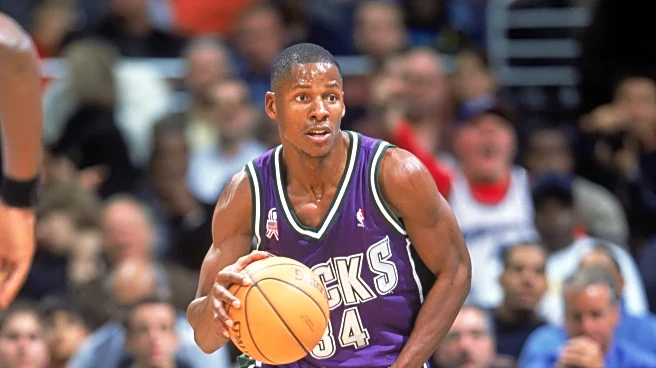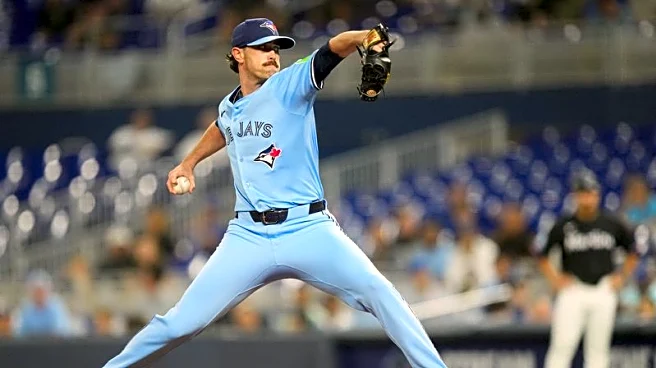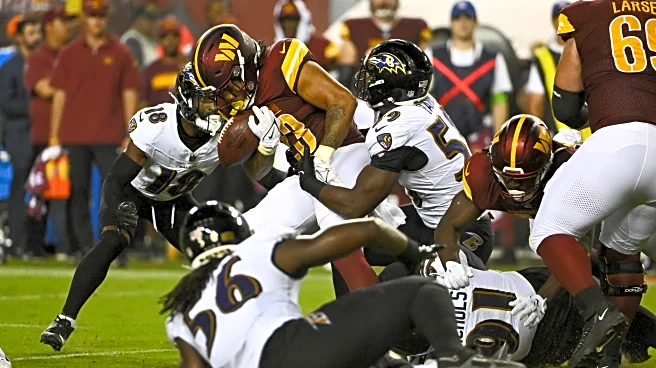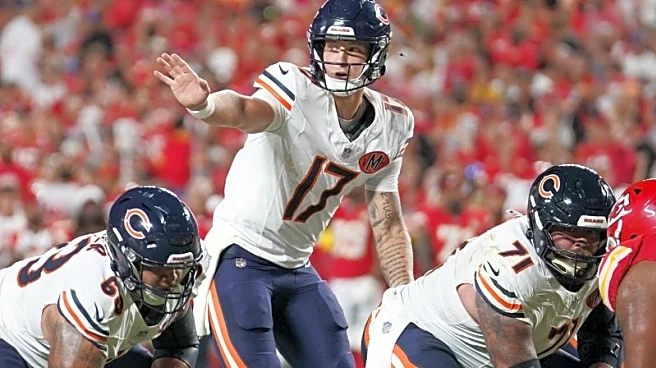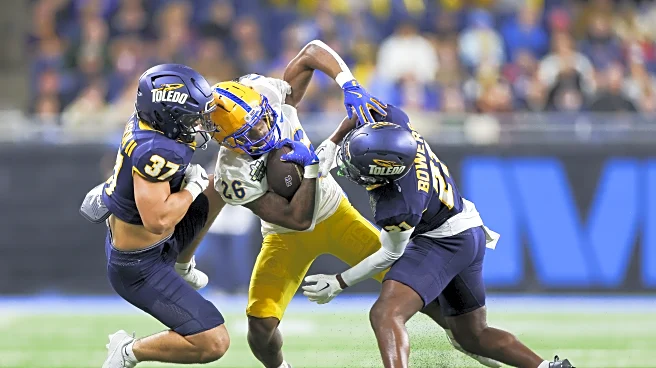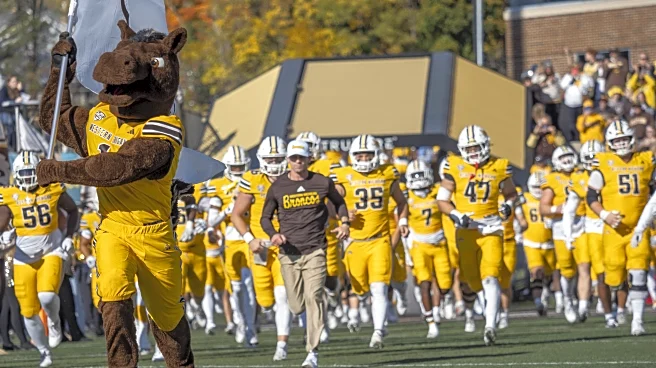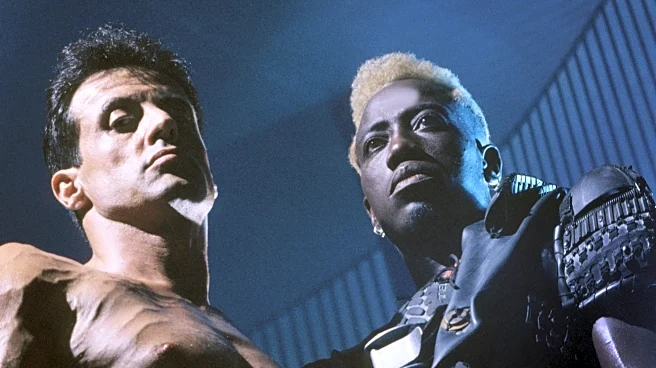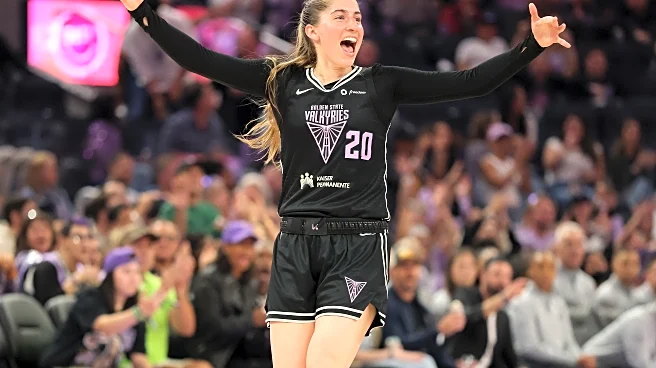
Editor’s note: read parts I, II, III, and IV here.
3. “Tobias Who?”: Trading Tobias Harris for Half a Season of J.J. Redick (2013)
We’re on the podium, and here shine true gems of incompetence. Tobias Harris, a name that in Milwaukee evokes expressions of regret and anger. This is a case of extreme short-termism, meaning “just make the playoffs, even if it means blasting the future into space.” Unfortunately, the Bucks fell victim to this thinking in 2013.
Tobias Harris joined the Bucks in 2011 as a teenager
(19 years old), drafted 19th by Charlotte and immediately traded to Milwaukee (it was part of a complex trade involving Stephen Jackson and others). At the time, Tobias was considered a promising wing: strong, with a shot, capable of playing with his back to the basket, good on the boards. On the Bucks, however, he had a tough start. Coach Scott Skiles was known for his lack of patience with young players, so Harris played garbage time in his rookie season, sometimes flashing brilliance (a few games with double-digit points), but generally Skiles preferred veterans. Despite this, Tobes showed promise: in 2012 Summer League, he was dominant. Harris worked hard and started the 2012–13 season as… a starter! Yes, Skiles surprisingly put young Harris in the starting five at the beginning of the season. Unfortunately, after a month, he suffered an elbow injury and was out for several games pushing him to the bench for the next two months. During that time, Skiles lost his job (the Bucks were mediocre), and Jim Boylan took over as interim coach.
Boylan, unlike Skiles, completely disregarded Harris in the rotation. A healthy Tobias returned, and the new coach gave him… five minutes here, a DNP there. Fans were shocked: why are they playing Mike Dunleavy and Marquis Daniels when they have a young bull like Harris hungry to play? But Boylan had a top-down mission—to make the playoffs (Bucks owner Herb Kohl always preferred eighth place over the lottery). So he opted for experienced players because he didn’t trust a 20-year-old. Harris withered on the bench for weeks, growing increasingly frustrated.
The 2013 All-Star break and trade deadline arrived. The Bucks had a record of around 26-25, meaning the eighth seed was almost guaranteed, but they dreamed of climbing higher. Their biggest problem was three-point shooting, especially off the bench; they lacked a shooter, as Dunleavy was inconsistent. J.J. Redick, a shooter from Orlando, whose contract was expiring, was available and the Magic wanted something for him before he left that summer. Redick was a valuable weapon: 15 points per game, 39% from three, a recognized specialist. The Bucks bit.
On February 23, 2013, a trade was made: Milwaukee acquired J.J. Redick, Gustavo Ayón, and Ish Smith from the Orlando Magic. In return, Orlando received Tobias Harris, Beno Udrih, and Doron Lamb. To be clear, Beno Udrih was an experienced backup PG, whose contract was expiring; Doron Lamb was a no-name rookie from the second round, nothing special. So in reality: Tobias Harris for Redick, plus the rest to match salaries.
Even at that moment, you didn’t need to be a genius to yell “WHAT ARE YOU DOING?!” Tobias was only 20 years old, with two years left on his rookie contract, and he showed flashes of brilliance. Redick, 28 years old, half a year left on his contract, and likely to leave that summer (it wasn’t certain the Bucks would extend him, as he’d probably want a lot of money). It was an all-in move to make the playoffs and get hammered in the first round, because the Bucks weren’t playing for anything more. Of course, that’s exactly how it ended: Milwaukee made it as the eight seed (38-44 record, because after the trade, they ironically played even worse), and in the first round, they were swept 0-4 by LeBron’s Miami Heat. Redick played poorly in the series (averaging seven points and 19% from three—a disaster); he never quite found his footing in Milwaukee (with Monta Ellis and Jennings, it was hard for him to get shots up). After the season, he signed with the Clippers without blinking an eye. In other words, the Bucks gave up a future potential All-Star for 28 games of Redick (regular season + playoffs).
The worst, however, was yet to come and would emphasize the magnitude of the mistake: Tobias Harris in Orlando finally got minutes and… exploded. In his very first game with his new team, he scored 20 points. A few weeks later, on March 17, in a matchup against the Bucks (oh, the horror), Tobias dropped 30 points, 19 rebounds, and five assists on his former team, and the Magic beat the Bucks in overtime. Not enough? I’ll add that in the final seconds of that overtime, with Orlando leading, Harris emphatically dunked the ball, even though he could have dribbled out the clock. A statement dunk: “take that for not appreciating me.” Bucks players were outraged (because it was unsportsmanlike to dunk like that at the end of a won game), but Harris didn’t care. It was a statement: Milwaukee’s knees must have buckled seeing the kid they traded for nothing in action.
For the rest of the 2012–13 season, Harris averaged 17.3 points and 8.5 rebounds in 27 games for Orlando; from a benchwarmer on the Bucks, he became a top option for the Magic, even though they were a tanking team. In subsequent years, Tobias developed into a solid wing averaging around 18–20 points per game, somewhere between a star and “just a good scorer.” He played for several clubs (Pistons, Clippers), always performing at a high level, until in 2019 he joined the Philadelphia 76ers, where he signed a max contract ($180m over five years— a lot, as he’s sometimes criticized for not being a max-level star, but that’s another story). In any case, Tobias Harris became a 20-point per game scorer, precisely what Milwaukee had been looking for for years. And they had him right there. And gave him away for an aging mercenary.
This trade is for the Bucks what the Vlade Divac-for-Kobe draft rights trade is synonymous with for the Lakers, just in reverse. Milwaukee was the fool in this transaction. It always appears somewhere in rankings of the worst trades of the 2010s.
Why did it happen? Again, the influence of owner Sen. Kohl: he wanted playoffs at all costs. The 2013 Bucks had a record around .500, the Magic offered Redick: a name (would it boost ticket sales?) and a shooter. Kohl reportedly pushed for it. GM John Hammond supposedly defended himself, saying it wasn’t his initiative, but it went through. Interestingly, according to rumors, the Bucks initially offered Mike Dunleavy (expiring contract, experienced shooter) for Redick. The Magic didn’t want him. So they asked about Harris, and the Bucks should have said “no way.” Unfortunately, they agreed. In the locker room, it was said that Skiles and Boylan didn’t believe in Tobias (Skiles benched him after 4 games, Boylan continued to ignore him, and they probably signaled to Hammond that Harris wasn’t a game-changer). Oh, how wrong they were.
To be fair: Redick, after that flop half-season with the Bucks, thrived with the Clippers and played great there for 4 years. It’s not that his career ended, but Milwaukee got nothing out of him. They probably wouldn’t have extended him anyway, because he preferred a bigger role on another team.
On the list of Milwaukee’s mistakes, this is top three, no argument. Even if Tobias hadn’t become a multi-millionaire and borderline All-Star, the principle is: do not give away a 20-year-old with potential for a guy for three months. It’s elementary. The Bucks broke it, and to this day, that move symbolizes an era of fruitless chasing of the eight seed. How differently could the club’s fate have turned out if Tobias had stayed, maybe they would never have hit rock bottom in 2014 and wouldn’t have drafted Giannis? On the other hand, maybe they would have built with Giannis and Tobias in parallel. Who knows.
It’s worth adding that in 2013, a change occurred. Owner Kohl finally agreed to a rebuild, albeit a controlled one. Unfortunately, a year too late. By trading Harris, they lost a key element of their young core. In 2014–15, they were starting over with Giannis and Jabari Parker… if Tobias had been alongside them, how much easier would it have been? Though there probably wouldn’t have been room for Parker then, but Parker was ultimately eaten by injuries anyway.
2. A stab in Milwaukee’s heart: The Ray Allen for Gary Payton Trade (2003)
We’re approaching the biggest mistake, but first: the runner-up. For many Bucks fans, especially those who remember the 90s and 2000s, this is probably their number one worst memory: the day a beloved superstar was traded for an aging, grumpy star. Sound familiar? Yes, we’re talking about the Ray Allen trade.
Let’s go back to early 2003. The Bucks at the turn of the century were a “Big Three” team: Ray Allen, Sam Cassell, Glenn Robinson: a trio that led Milwaukee to the Conference Finals in 2001 (a memorable series against Iverson’s Sixers, lost in seven games after controversial officiating; the Bucks were a step away from the NBA Finals). Unfortunately, subsequent seasons saw a regression. In 2002, the team didn’t even make the playoffs, and tensions between the stars and coach George Karl grew. In the summer of 2002, Glenn Robinson was traded to Atlanta, supposedly refreshing the roster, but friction remained, mainly between Ray Allen and coach Karl. Ray was a fan favorite: young (27 in 2003), handsome, humble, hardworking, and an incredibly talented shooter. Many saw him as “the new Reggie Miller,” and even potentially someone better. He spent six and a half seasons in Milwaukee, played in three All-Star Games, won the three-point contest, and was the face of the organization. Unfortunately, his relationship with Karl soured; it was reportedly about discipline and commitment. Karl was known for sarcastic remarks, Ray for his pride and professionalism; sparks flew. Kohl had to choose: do I side with the coach or the star?
He chose… the coach. The contact probably also played a role: Allen was approaching the end of his (he was set to be a free agent in the summer of 2003). He was likely demanding a max deal. Senator Kohl had a reputation for being reluctant to pay big money, and George Karl was convincing: we won’t win with Ray; we need changes. The Bucks had a record of around 25-25 in February 2003, they played inconsistently, and Karl complained that Allen wasn’t the leader he wanted.
And it happened: on February 20, 2003, just before the trade deadline, the Milwaukee Bucks traded Ray Allen, along with a proverbial “contribution” (young scorer Flip Murray, veteran point guard Kevin Ollie, plus a 2003 first-round pick) to the Seattle SuperSonics. In return, they acquired Gary Payton and Desmond Mason.
This trade shook the NBA. Payton was indeed a legend: a 9-time All-Star, an icon of 90s Seattle, one of the best perimeter defenders in history. But he was already 34 years old, and his contract was also expiring in the summer of 2003. Seattle traded him because they were rebuilding, hence they added Mason (a young athletic dunker) so Milwaukee wouldn’t get too bad a deal. However, from the Bucks’ perspective: they traded a 27-year-old sharpshooter (practically a future Hall of Famer, though it wasn’t known then how much he would develop) for a 34-year-old point guard nearing the end of his career (though still strong—Payton in 2003 averaged 20 PPG and eight APG).
Why did they do it? Well, they thought short-term: “The Glove” plus Cassell will give us a playoff boost now (editor’s note: and opened up a starting role for rising star Michael Redd). Besides, Karl dreamed of working with Payton again. He coached him in Seattle in the 90s; they had a love-hate relationship, but Karl believed Payton was a leader with grit that Allen lacked. They weren’t worried: Payton supposedly wanted to extend in Milwaukee, Mason was young enough to develop, so maybe they’ll keep both? Ray Allen would probably leave for free in the summer if they didn’t give him the max, so they’d rather get something.
That’s probably what they thought. Reality: Payton played only 28 games for the Bucks (regular season plus the 2003 playoffs). Yes, he played well (averaged 19 PPG and seven APG in the regular season; the Bucks went 10-8 to finish the season). He led them to the playoffs as the seventh seed, where they fought a tough series against the New Jersey Nets (lost 2-4). Payton played well, but the Bucks were eliminated. And then Payton… left. In the summer, as a free agent, he had no intention of languishing in Milwaukee. He was hungry for a title and signed for peanuts with the Los Angeles Lakers (where he formed a famous “superteam” with Karl Malone, Kobe, and Shaq).
Milwaukee was left with nothing, only the memory of a few months of Payton. They were left with Mason, a solid dunker, 15 points per game for a few years, a nice guy, but never an All-Star. Meanwhile, Ray Allen returned to his All-Star level in Seattle as early as 2004, and over time climbed even higher. In 2005, he averaged 26 points per game, leading the Sonics to the conference semifinals. Then a trade to Boston, a title in 2008, and another with Miami in 2013. A Hall of Fame career, an all-time record for made threes (later broken by Curry). A guy whose jersey would have been retired by the Bucks. Except, the Bucks preferred Payton.
For Milwaukee fans, it was traumatic. Ray Allen was the face of their team; he was also involved in the local community. Literally, grown men cried when the news broke. Even Ray didn’t hide his emotions. He felt hurt because he genuinely wanted to stay in Milwaukee and rebuild the team’s power. In interviews years later, he said: “they told me I wouldn’t be traded, and the next day I was packed for Seattle. It hurt like hell.” In one fell swoop, the Bucks lost their biggest star since Moncrief, and their local popularity plummeted.
On top of that came the results: After Allen’s departure, the Bucks fell into mediocrity, or rather, stagnation. The 2003–08 seasons saw a first-round playoff appearance at most, often missing the playoffs altogether, until Brandon Jennings arrived. With Ray, they would at least have had an attractive star around whom to potentially build a new roster. Without him, they became a team without a face (Redd still had to develop, and though he was a great shooter, he wasn’t quite Allen’s caliber).
All in all: the darkest day for a Bucks fan in those years. Karl was hated (to this day, many say the trade is his fault because he didn’t get along with Ray). By the way, Karl didn’t lead the Bucks much longer: after the 2003 season, he was finally fired. So they fired the coach for whom they sacrificed a star. Sad and frustrating.
No wonder our ranking places this very high at two. It’s worth noting that this wasn’t just a sporting mistake, but a blow to the club’s identity. Suddenly, the Bucks became a no-name team for the rest of the league; in the eyes of fans, “they don’t care about the best players.”
Ray Allen is still loved in Milwaukee today, even though his best years were elsewhere. When he appears in the stands (he’s visited several times to watch Giannis’ playoff runs and cheered for his old team), he gets standing ovations. What if they had kept Allen in 2003? The Bucks probably would have given him a sox-year contract, and maybe they would have reached the conference semifinals in 2005 like Seattle? Maybe they would have built a better supporting cast around him and Redd? We don’t know that. We know they made a trade just to save the season, but they failed miserably.
There’s only one case that overshadows even this one. And we’ll move to that now.
1. The fateful 1998 Draft: Trading Away Dirk Nowitzki (and Pat Garrity) for “Tractor” Traylor (1998)
I know, I know. This series was originally meant to cover the period starting from 2002, the year I personally joined the ride and began living through every Bucks moment. I just can’t ignore what happened just a few years earlier. In 1998, a single move reshaped the entire following decade and became, for a long time, the ultimate symbol of frustration in Milwaukee. Even though it took place before I emotionally tied myself to this team, its shadow was still very much present when I first sat down to watch the Bucks in 2002. That’s why this list has to begin here. Because to truly understand the highs, the lows, and the strange cocktail of emotions that came with supporting the Bucks over the years, you need to go back to draft night 1998 and the decision that ensured Dirk Nowitzki would never wear green and white.
The biggest mistake of the Milwaukee Bucks? In the eyes of the NBA? Probably this one. Although it occurred just before the period outlined in the title (technically 1998), its consequences were felt throughout the entire first decade of the 21st century, and it is still remembered today as a cautionary tale. We are, of course, talking about trading away the rights to Dirk Nowitzki on the night of the 1998 draft.
The 1998 Draft took place during a lockout: uncertain times, and international scouting was still in its infancy. The Bucks had the 9th pick then, and their general manager was Bob Weinhauer (in practice, however, he consulted Karl and club legend Junior Bridgeman on personnel decisions with). Milwaukee desperately needed a strong big man. A year earlier, they had drafted Tim Thomas (a forward), they also had Glenn Robinson (a forward), but the center position was struggling (Olden Polynice?). They dreamed of a young power forward or center to pair with Glenn. On the list of prospects was Robert “Tractor” Traylor from Michigan, a massive (290+ pounds) center/power forward, who had just been named MVP of the conference tournament, had charisma, and the strength of an elephant. However, there was a problem: Traylor was projected in the top five, the Bucks had the ninth. They might miss out.
Meanwhile, somewhere in the second half of the lottery, Dirk Nowitzki was a 19-year-old mustachioed German who had shone at the Nike Hoop Summit but was still considered a mystery. The few who watched him (including then-Dallas Mavericks coach Don Nelson) fell in love. They even projected him into the top 10. The Bucks also had him on their radar. And on draft night, a miracle happened: Dallas wanted Dirk (they had the sixth pick), but they knew they could get him lower, so they traded up with the Bucks: Dallas would pick Traylor at six for Milwaukee, and Milwaukee would pick Nowitzki for Dallas at nine. Milwaukee would also send pick no. 19 (Pat Garrity) to Dallas. The Bucks wanted Tractor, the Mavs wanted Dirk. A match made in heaven.
Dallas later packaged Garrity in a trade for Steve Nash, so they gained Nash & Nowitzki from that single exchange! The rest is history: Dirk Nowitzki struggled for the first two years, but then exploded, becoming one of the NBA’s greatest stars, 2007 MVP, 2011 champion, a top six scorer in league history. A Hall of Famer, an icon of Dallas, and European basketball.
And what about Robert Traylor? Unfortunately, the friendly giant had serious weight and health issues. He only played two seasons for the Bucks (averaging 4–5 points and three rebounds), after which they sent him to the Cavs. He never fulfilled his college potential. His story ended tragically. In 2011, he died of a heart attack at just 34 years old; unfortunately, obesity and cardiac problems overcame him.
While the Bucks were lauded for it at the time, this trade is one of the most one-sided in NBA history. Even if they understood that the teenage German was a long-term project, wasn’t it worth trying? Well, they preferred immediate strength and a “safer” pick—and that’s what ruined them. The Bucks made excuses for years: “Everyone would have done that back then, Dirk was an unknown, and Traylor dominated the NCAA.” To some extent, that’s true.
Imagine the alternative: the Bucks with Dirk Nowitzki and Ray Allen as a duo. That could have been a dynasty! Even with Glenn Robinson added to that. As it was, in 2001, they still reached the conference finals, but with Dirk, would they have been in the NBA Finals? Instead, Dirk in Dallas became one of the top 75 players ever, while the Bucks had no one of that caliber for decades.
This mistake is so obvious that even if it formally occurred before 2002, it had to be on the list. It’s like a mythical monster, a shadow hanging over Milwaukee. Even the Ray Allen trade pales in comparison because Ray still became a star with them, contributed something, while was never a Buck at all.
Of course, one can speculate: would Dirk have developed the same way in cold Milwaukee without mentor Nellie? Or without Nash? Maybe not, maybe he would have left in free agency. But that’s just speculation; the hard facts are merciless.
That is why trading away Dirk Nowitzki earns the title of the biggest mistake of the Bucks (despite a slight stretch of the dates). Even counting from 2002, the echo of this mistake is felt long because the Bucks, after 2001, fell into stagnation again, and Dirk played in the Finals in 2006, won a title in 2011. Every Milwaukee fan watching those 2011 Finals rejoiced (because Dirk is a great guy), but in the back of their minds, it lingered: “damn, he should have been one of us…”
Epilogue:
The fifteen stories above constitute a peculiar catalog of sins and blunders by the Milwaukee Bucks over more than two decades. Themes of excessive short-sightedness, misguided talent evaluations, owner pressure to simply make the playoffs, or just plain bad luck intertwine here. There is much sarcasm and criticism in this chapter, but it must be noted: the Bucks as an organization have learned much from their own mistakes. When Giannis lifted the trophy in 2021, fans in Milwaukee could finally say: “it was worth the suffering.” However, the path to the title was riddled with landmines—as seen, some of them blew up right in their faces.
Would the Bucks avoid similar mistakes today? One can hope. The new owners and management seem more inclined to invest in the future (though, for example, giving up five second round picks for Crowder in 2023 recalled old demons). The Bucks’ history is a warning: even a small market cannot win if it cannot manage talent and assets with a clear head.
For consolation, let’s add that Milwaukee is not the only author of spectacular blunders. Every team has its skeletons in the closet. But Bucks fans certainly underwent solid training in patience and black humor before successes arrived. And such stories, like the ones above, are then told for years—as a warning, and as an encouragement to the heart. Because if, despite so many mistakes, one can climb to the top, it means it’s never too late to atone for past wrongs.
Will the Bucks avoid further mistakes? Hopefully so. But knowing NBA life, sooner or later someone somewhere will take a risk, miscalculate, outsmart themselves… and we’ll have material for more chapters of this chronicle of blunders.
Thank you for reading and going with me through these fifteen stories of Bucks history. Working on this project for the last few months gave me a lot of joy and excitement. I’m curious about your opinion. Which of these decisions do you disagree with the most? What do you think is missing from the list? Share your thoughts in the comments. I’d love to hear your view. Dziękuję.
